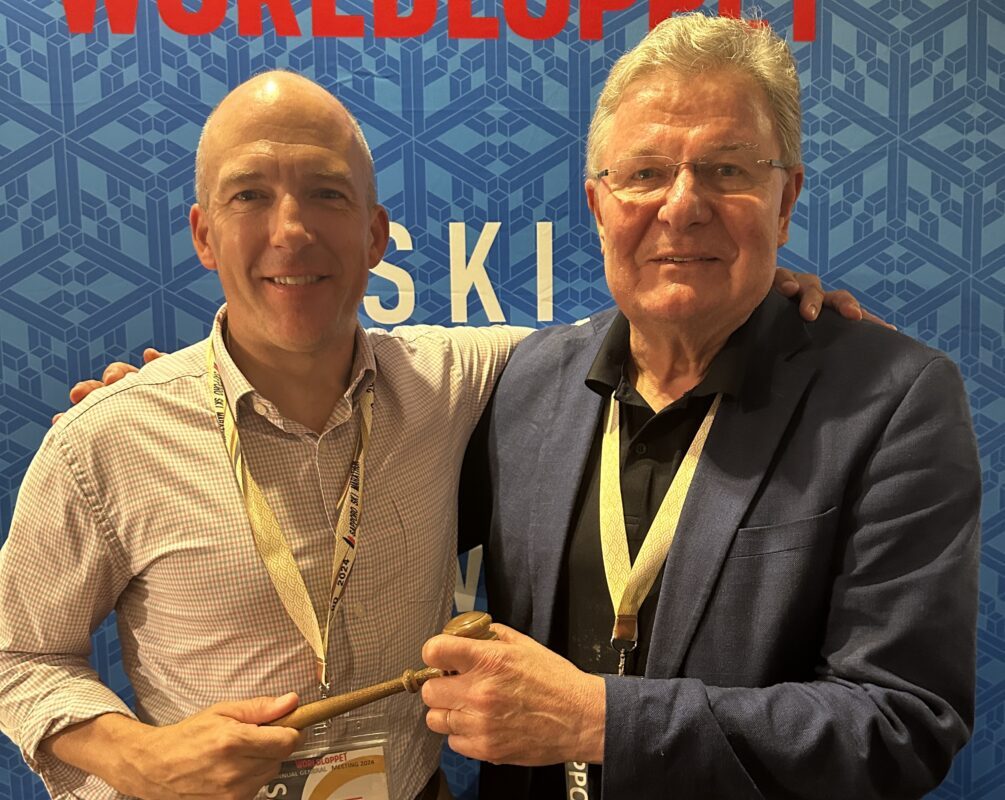
Like the women’s relay here, the men’s relay at the World Junior Championships today came down to to the wire. And just like in the women’s race, it was Norway that prevailed.
As he attacked the last rise, Finn Krogh was able to do something nobody has done yet here: drop Russia’s Petr Sedov in a mass start race. With a Northug-like kick, Krogh propelled the Norwegian men to their first junior relay championship since 2006—when Petter himself was on the team.
Glued to Sedov all the way up and over the main climb here, Krogh said that his plan all along was to stick with the Russian, then attack at the finish. The move was impressive—Krogh was a whirl of arms and legs—and Sedov was not close, ending up four seconds back.
Thomas Bing anchored the third place German team, coming across the line 28 seconds behind Krogh.
The relay, Krogh said, is the crown jewel event for Norway.
“So it was very good to win,” he said.
The American team of David Norris, Sam Tarling, Scott Patterson, and Erik Bjornsen came home in twelfth place. Bjornsen skied the anchor leg, and he bridged a sizeable gap to the Swedish skier in front of him in the last 300 meters of the race, though could not quite hold his lead in a tight finishing sprint. The effort left him still out of breath for an interview five minutes later.
Matt Whitcomb, the head U.S. junior coach here, said that the team got two solid legs from Bjornsen and Patterson, but that with such a strong field, “you have to put four excellent performances together to get into the top six.”
“Our guys are competitive enough that when we put together four perfect performances, we’re going to be able to stand on the podium,” he said. “But that’s a hard thing to accomplish…Today we put together two pretty good legs, and two great legs.”

The fans were out in droves again today. Tarling said that it was the loudest he’d ever heard a crowd.
“The top of the hill was something to remember, for sure,” he said.
Tarling and Whitcomb also noted the performance of the race organizers, who despite challenging weather pulled off a remarkably smooth series of events.
Georg Zipfel, the chief of competition here, headed a production that was staffed by more than 1,000 volunteers. It was the first large-scale event at the Notschrei Nordic Center—the name of which, perhaps fittingly, translates roughly to “cry for help”.
He organized the building of new race trails at the venue here, and he said that the these, combined with a rollerski loop, will make the Black Forest a world-class training center for German athletes centered at the Olympic Training Center in Freiburg nearby.
“This is the last thing that we need, and now we can start,” he said.
With seven races in seven days, the only people who may have worked harder than Zipfel here were the team’s service crews.
Those staffs had to contend with inaccurate weather forecasts, heavy snow almost every day, as well as two pursuits, which required the preparation of twice as many skis for each athlete.
“I knew that seven consecutive days of racing was going to be challenging, and it was more than I even had dared to dream for,” said Abi Holt, one of the members of the American wax crew here. “I’m kind of excited now, though—I feel like I just survived glide waxing boot camp.”
Nathaniel Herz
Nat Herz is an Alaska-based journalist who moonlights for FasterSkier as an occasional reporter and podcast host. He was FasterSkier's full-time reporter in 2010 and 2011.



